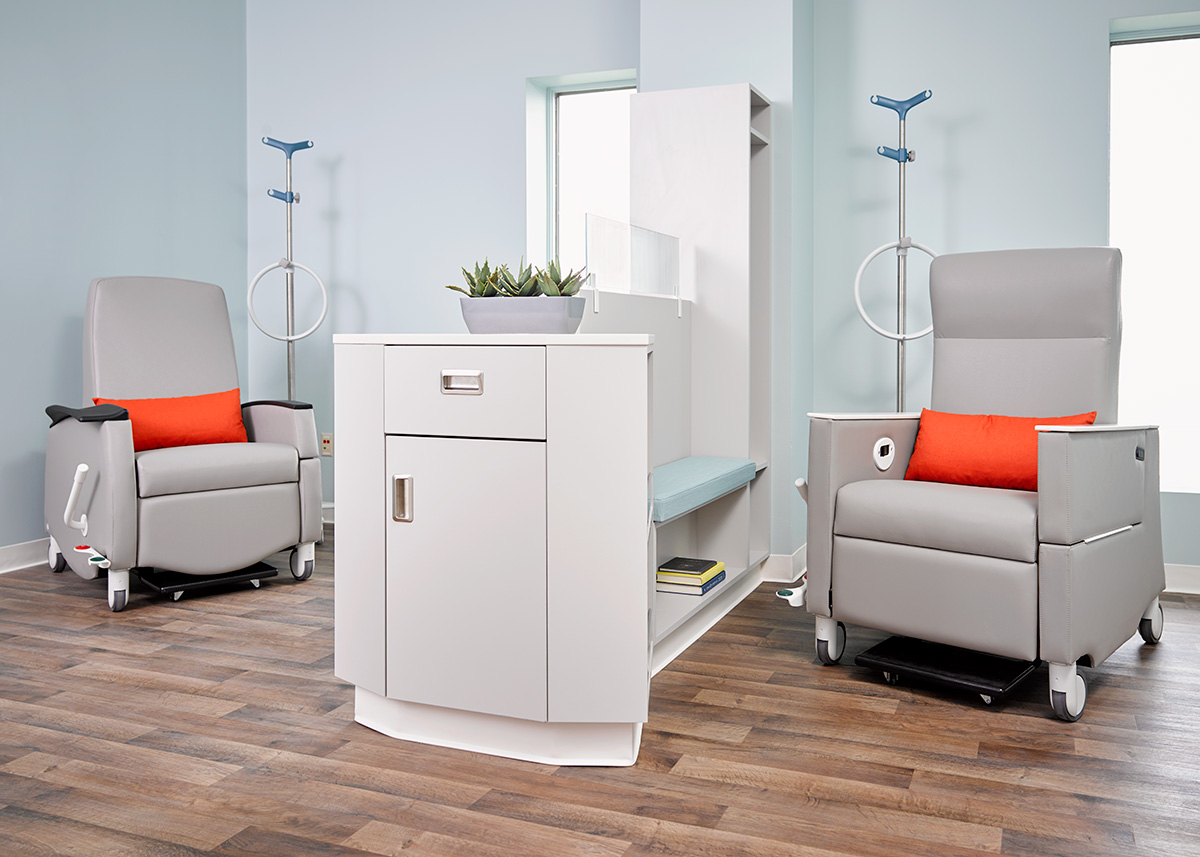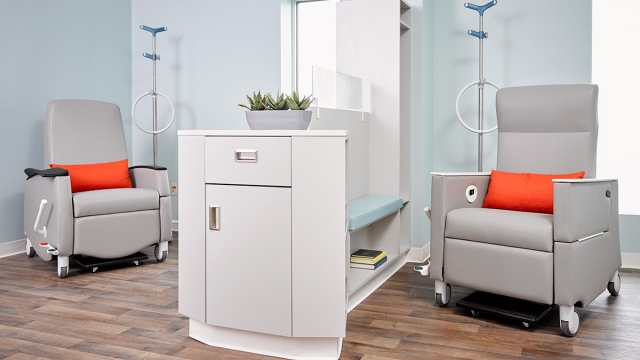The way we design and think about healthcare spaces has come a long way over the years, and healthcare furniture is no exception. Gone are the days of sterile and uncomfortable waiting room chairs and hospital beds that resemble something out of a nightmare. Today, the focus is on creating an environment that promotes comfort and care for patients and their families. Healthcare furniture plays a vital role in achieving this goal, as it not only provides a practical solution for various healthcare settings but also contributes to the overall well-being of those using it. From ergonomic chairs that support proper posture to adjustable hospital beds that ensure patients can find their ideal position, healthcare furniture has evolved to meet the diverse needs of both patients and healthcare providers. In this article, we will explore the fascinating journey of healthcare furniture, highlighting the key design principles, features, and innovations that improve the patient experience while fostering a healing and soothing environment. So, let’s dive in and discover how healthcare furniture has transformed from a purely functional necessity to an integral part of modern healthcare design.
The Importance of Ergonomics in Healthcare Furniture
Comfort and care are two essential elements in healthcare settings, and the design of furniture plays a crucial role in achieving these goals. When it comes to healthcare furniture, ergonomics takes center stage. Ergonomically designed furniture ensures that patients and healthcare professionals can experience optimal support, functionality, and comfort throughout their time in medical facilities.
One key aspect of healthcare furniture ergonomics is the ability to provide adjustable features. Chairs and beds that can be easily adjusted to accommodate individuals with different heights and body types are essential. This flexibility allows patients to find the most comfortable and supportive position, promoting both relaxation and proper body alignment.
In addition to adjustability, healthcare furniture should prioritize accessibility. Furniture with features like lower seat heights, armrests, and easy-to-reach controls enable individuals with various mobility levels to navigate and utilize the furniture without any discomfort or challenges. This promotes a sense of independence and dignity for patients, contributing to their overall well-being.
Furthermore, ergonomic design in healthcare furniture considers the needs and comfort of healthcare professionals. Healthcare providers spend long hours attending to patients, and ergonomic furniture can help prevent fatigue and musculoskeletal issues. Chairs with proper lumbar support, adjustable height, and adequate padding can significantly reduce the strain on healthcare providers’ backs and necks, allowing them to focus on delivering the best care possible.
By prioritizing ergonomics in healthcare furniture design, medical facilities can create an environment that enhances patient comfort and promotes the well-being of healthcare professionals. Taking into consideration the importance of adjustability, accessibility, and support, healthcare furniture designers can ensure that individuals in medical settings receive the comfort and care they deserve.
Design Considerations for Creating Comfortable Healthcare Spaces
When designing healthcare furniture, it is crucial to prioritize comfort and care for patients. Creating spaces that promote relaxation and well-being can greatly contribute to the overall healing process. Additionally, ergonomic considerations should be taken into account for healthcare professionals who spend long hours attending to patients. With these factors in mind, below are some key design considerations for creating comfortable healthcare spaces.
-
Ergonomics and Functionality: Healthcare furniture should be designed to provide maximum comfort and support for patients and healthcare providers alike. Ergonomic features such as adjustable heights, lumbar support, and padded armrests can significantly enhance comfort levels. Additionally, functionality is essential to ensure that the furniture meets the specific needs of the healthcare environment. For example, chairs with wheels can aid in easy mobility, allowing healthcare professionals to attend to patients more efficiently.
-
Choice of Materials: The choice of materials for healthcare furniture is critical in creating comfortable spaces. Upholstery fabrics should be selected with durability, ease of cleaning, and patient comfort in mind. Antimicrobial and stain-resistant materials can help maintain hygiene and cleanliness, while soft and breathable fabrics can enhance patient comfort. Considering environmental sustainability is also becoming increasingly important in the design of healthcare furniture.
-
Aesthetics and Ambiance: The visual appeal of healthcare spaces can greatly impact the comfort level experienced by patients. Incorporating calming and soothing color palettes, as well as natural elements like plants and outdoor views, can help create a more relaxing atmosphere. Lighting also plays a crucial role in healthcare environments, with a balance between natural and artificial lighting being preferred. Additionally, acoustics should be well-designed to reduce noise levels and promote a peaceful and tranquil environment.
Hospital Furniture Manufacturers
By prioritizing comfort, functionality, and aesthetics when designing healthcare furniture, it is possible to create spaces that promote a sense of well-being for patients and healthcare professionals. These considerations can contribute to a more positive experience, leading to improved outcomes in healthcare settings.
Innovations in Healthcare Furniture for Enhanced Patient Care
Over the years, the healthcare industry has witnessed remarkable advancements in the design and functionality of healthcare furniture. These innovations have revolutionized the way patients experience care, prioritizing comfort and well-being.
One key area of innovation focuses on adjustable beds. These beds offer customizable positions, allowing patients to find the most comfortable and therapeutic posture for their specific needs. With the touch of a button, patients can elevate their heads or legs, relieving pressure, improving blood circulation, and minimizing pain. Adjustable beds also enhance accessibility for healthcare providers, facilitating easier patient monitoring and care.
Another notable innovation lies in the development of ergonomic chairs. Understanding the importance of proper posture in maintaining patient comfort and preventing musculoskeletal issues, healthcare furniture designers have created chairs with adjustable features. These chairs provide lumbar support, promote correct spinal alignment, and offer customizable seating positions. With these ergonomic chairs, patients can remain seated comfortably for extended periods, improving their overall well-being during treatments or consultations.
Furthermore, the integration of technology into healthcare furniture has transformed the patient experience. Furniture now comes equipped with smart features, such as built-in screens or connectivity capabilities. These technological advancements enable patients to access entertainment options, educational materials, or even connect with loved ones virtually, creating a more comforting and connected environment.
The continuous evolution of healthcare furniture showcases the ongoing efforts to prioritize patient comfort and care. Through innovations in adjustable beds, ergonomic chairs, and technology integration, healthcare facilities aim to create spaces where patients feel supported, relaxed, and empowered throughout their healthcare journeys.

